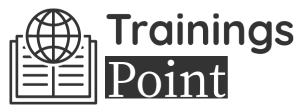You work in a complex and ever-evolving workplace. Conflict is a natural result of people having different points of view, values, and beliefs.
When left unaddressed, workplace conflict can lead to increased absenteeism, reduced productivity, resentment, hostility, and disengagement. When well-managed, conflict can enhance relationships, deepen understanding of self and others, and stimulate change and growth. Knowing that there is not a one-size-fits-all approach to resolving conflicts, how do you help manage conflict effectively and support your colleagues who may be feeling frustrated, angry, or powerless? Successful leaders know how to manage conflict and set the tone for effective conflict resolution.
WHY SHOULD YOU ATTEND?
Move from having a workplace where there are conflicts around jurisdiction, power, lack of resources, and unrealistic expectations, to a workplace where there are productive conversations, buy-in, and powerful insights. Discover a framework for assessing the types of conflict common in the workplace and develop strategies for their resolution. Determine the right strategy for the right situation to encourage change, promote decision-making, build engagement, and prevent harm to your important working relationships.
AREA COVERED
Key Messages:
- Interpersonal conflict is inevitable
- When you consider conflict as a sharing of ideas, it can be beneficial to moving forward
- It’s OK to leave some conflicts unresolved
- Positive conflict management helps everyone move forward
- A leader’s negative reaction to conflict has a ripple-out impact on conflict in the workplace
- By listening empathetically, asking pertinent questions, evaluating the personalities involved, and determining the appropriate level of intervention, a leader can resolve most strife
Participants will:
- Explore the 10 causes and 6 escalators of conflict
- Understand best practices and practical strategies for resolving conflict
- Optimize your interaction and presence in a conflict
- Improve your understanding of and approach to conflict management by learning when and how to adopt the 5 different conflict resolution styles
- Discover how to respond effectively to conflict in different settings
- Learn how to confidently turn conflict into productive discussions using our 10 Steps
- Recognize how to establish and use conflict as a positive and productive force in the workplace
- Develop personal action plans for conflict situations back at work
WHO WILL BENEFIT?
- Human Resources Professionals
- Health and Safety Reps
- Union Reps
- Supervisors, Managers, Directors (Team Leads)
- Executive Directors Not-For-Profit
- Business Owners, Entrepreneurs
- C-Suite
Move from having a workplace where there are conflicts around jurisdiction, power, lack of resources, and unrealistic expectations, to a workplace where there are productive conversations, buy-in, and powerful insights. Discover a framework for assessing the types of conflict common in the workplace and develop strategies for their resolution. Determine the right strategy for the right situation to encourage change, promote decision-making, build engagement, and prevent harm to your important working relationships.
Key Messages:
- Interpersonal conflict is inevitable
- When you consider conflict as a sharing of ideas, it can be beneficial to moving forward
- It’s OK to leave some conflicts unresolved
- Positive conflict management helps everyone move forward
- A leader’s negative reaction to conflict has a ripple-out impact on conflict in the workplace
- By listening empathetically, asking pertinent questions, evaluating the personalities involved, and determining the appropriate level of intervention, a leader can resolve most strife
Participants will:
- Explore the 10 causes and 6 escalators of conflict
- Understand best practices and practical strategies for resolving conflict
- Optimize your interaction and presence in a conflict
- Improve your understanding of and approach to conflict management by learning when and how to adopt the 5 different conflict resolution styles
- Discover how to respond effectively to conflict in different settings
- Learn how to confidently turn conflict into productive discussions using our 10 Steps
- Recognize how to establish and use conflict as a positive and productive force in the workplace
- Develop personal action plans for conflict situations back at work
- Human Resources Professionals
- Health and Safety Reps
- Union Reps
- Supervisors, Managers, Directors (Team Leads)
- Executive Directors Not-For-Profit
- Business Owners, Entrepreneurs
- C-Suite
Speaker Profile
 Beverly Beuermann-King
Beverly Beuermann-King
With an impressive track record spanning over 25 years, Beverly has been guiding her audiences toward mastering their reactions to stress, cultivating a culture of resilience, and achieving thriving, engaged lives through her innovative S-O-S Principle™ and Work Smart Live Smart presentations. Beverly works with teams and leaders to shift from stressed out to resilient, enabling them to be more engaged, productive, and healthy.
Upcoming Webinars

How to Write Contracts for Procurement Professionals

How to Deal with Employees Who Love to Argue and Debate Eve…

Project Management for administrative professionals


Sunshine Act Reporting - Clarification for Clinical Research

Onboarding Best Practices for 2025: Proven Strategies to Po…

Transform Data into Insights: A Beginners Guide to Excel Pi…

Reprogramming your mind for Corporate Excellence: 4 Steps t…

Terminating Toxicity: Strategies For Leaders To Confidently…

ChatGPT and Project Management: Leveraging AI for Project M…

Uplifting the Credibility of HR: How to Build the Credibili…

How to Manage the Legal Landmine of the FMLA, ADA and Worke…

How to Write Effective Audit Observations: The Principles f…


Strategic Interviewing & Selection: Getting the Right Talen…


Onboarding Best Practices for Millennial and All Employees

Performance of Root Cause Analysis, CAPA, and Effectiveness…

Bridging Generational Divides in the Workplace


Emotional Intelligence: Mastering the Emotions of Great Lea…

FDA Audit Best Practices - Do's and Don'ts

2-Hour Virtual Seminar on How to Conduct an Internal Harass…

Accounting For Non Accountants : Debit, Credits And Financi…

Successful Strategies for FDA Expedited Pathways for Your D…

Regulation update Q1 2025: New and Proposed Regulations for…

Unlock Employee Loyalty: Stay Interviews Will Keep Them Eng…

Pay Transparency in Action: Strategies for Building Trust a…

Designing Employee Experiences to Build a Culture of Compli…


Reinvent Your Business with the Power of AI

Excel Lookup Functions: VLOOKUP, HLOOKUP, and XLOOKUP Made …

Developing and Implementing Quality Culture in the Organiza…

Tips and Techniques for Conducting an Effective Fraud Risk …

Break Free from Toxicity: Reclaim Your Power and Peace


Physician Employment Agreements: Problem Areas that can be …

Measure the Effectiveness of Compliance Programs by Engagin…

FDA Regulation of Artificial Intelligence/ Machine Learning

Quality Management Systems and Data Integrity

Implementing an Effective Human Error Reduction Program

Navigating 2025 Employment Laws: What Every Employer Needs …

Cleaning Data without Complex Functions - A Course for Data…


Succession Plan for 2025: It's Not Just for Emergencies - I…

Employers Should Prepare for Immigration Raids in 2025! Thi…

Managing Toxic Employees: Strategies For Leaders To Effecti…


Using High-Performance Coaching for Managers to Address Per…

